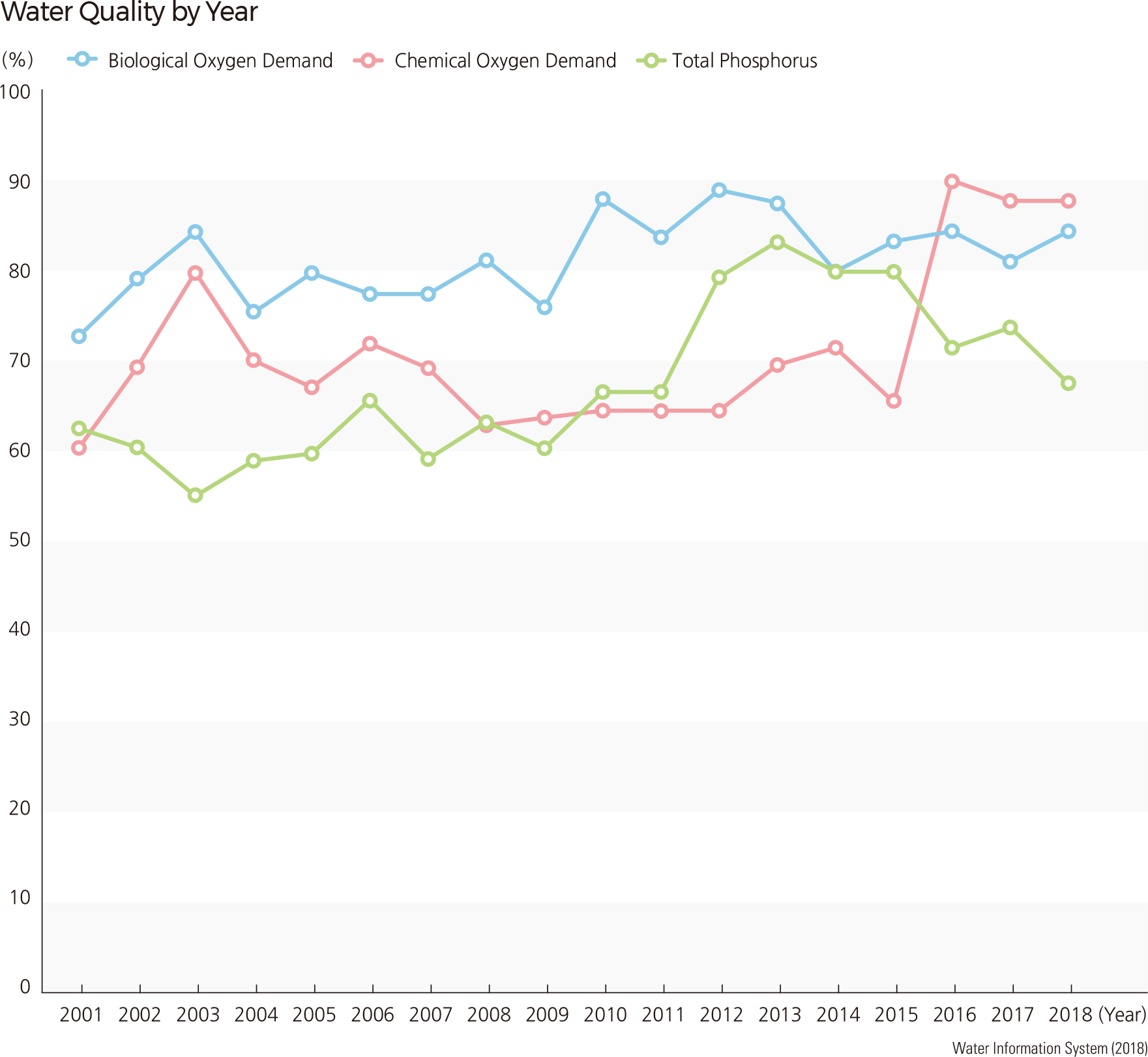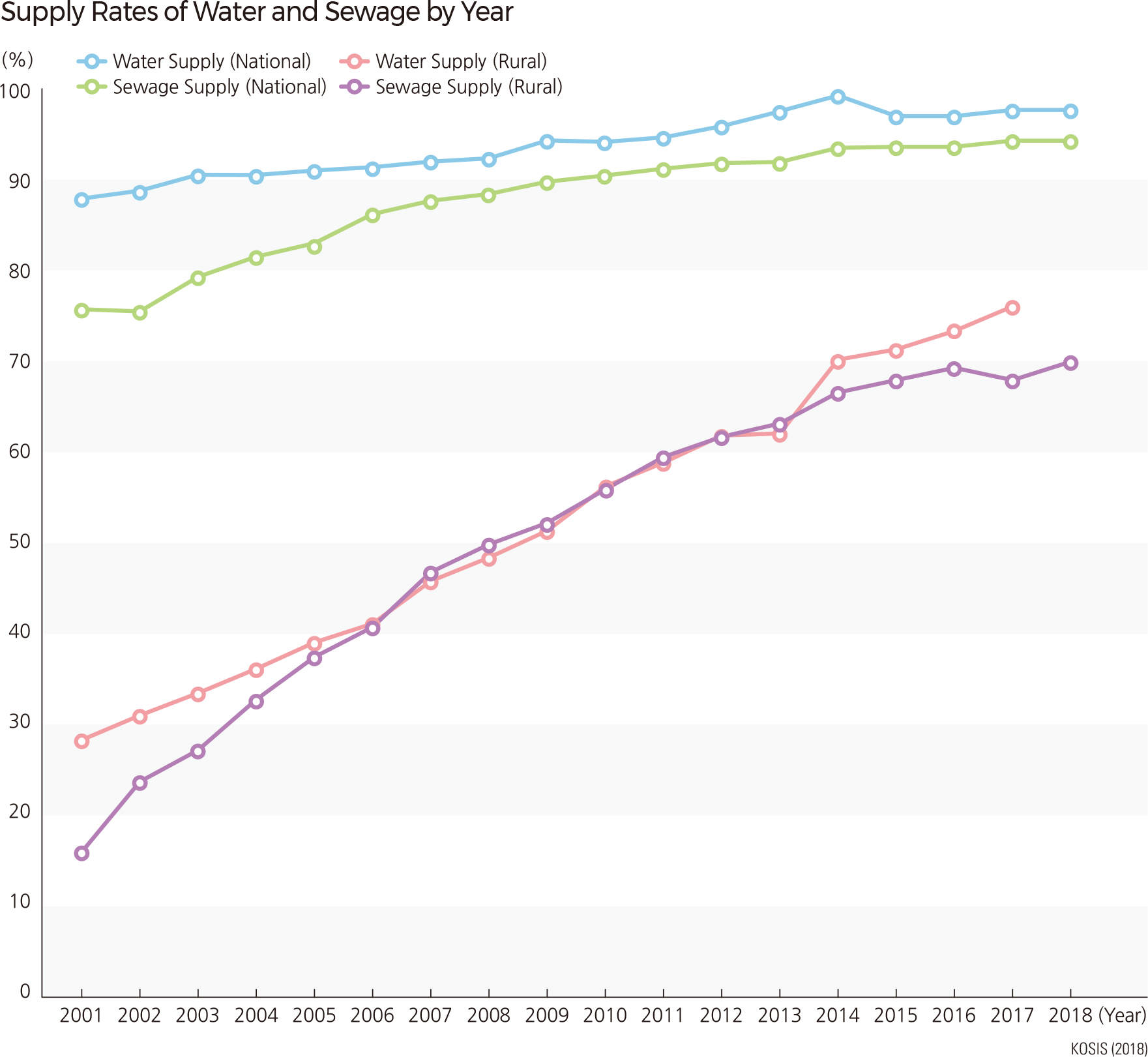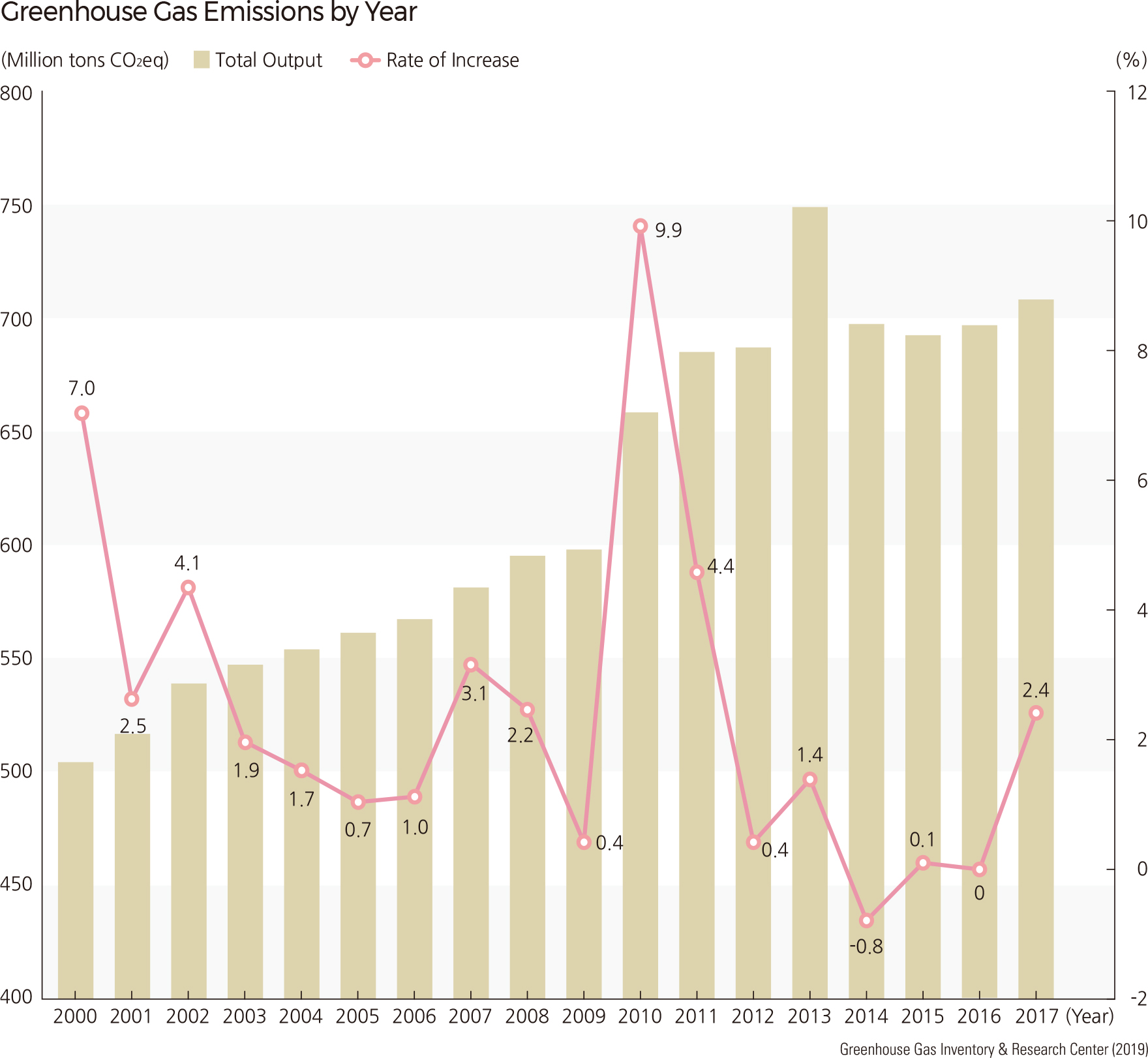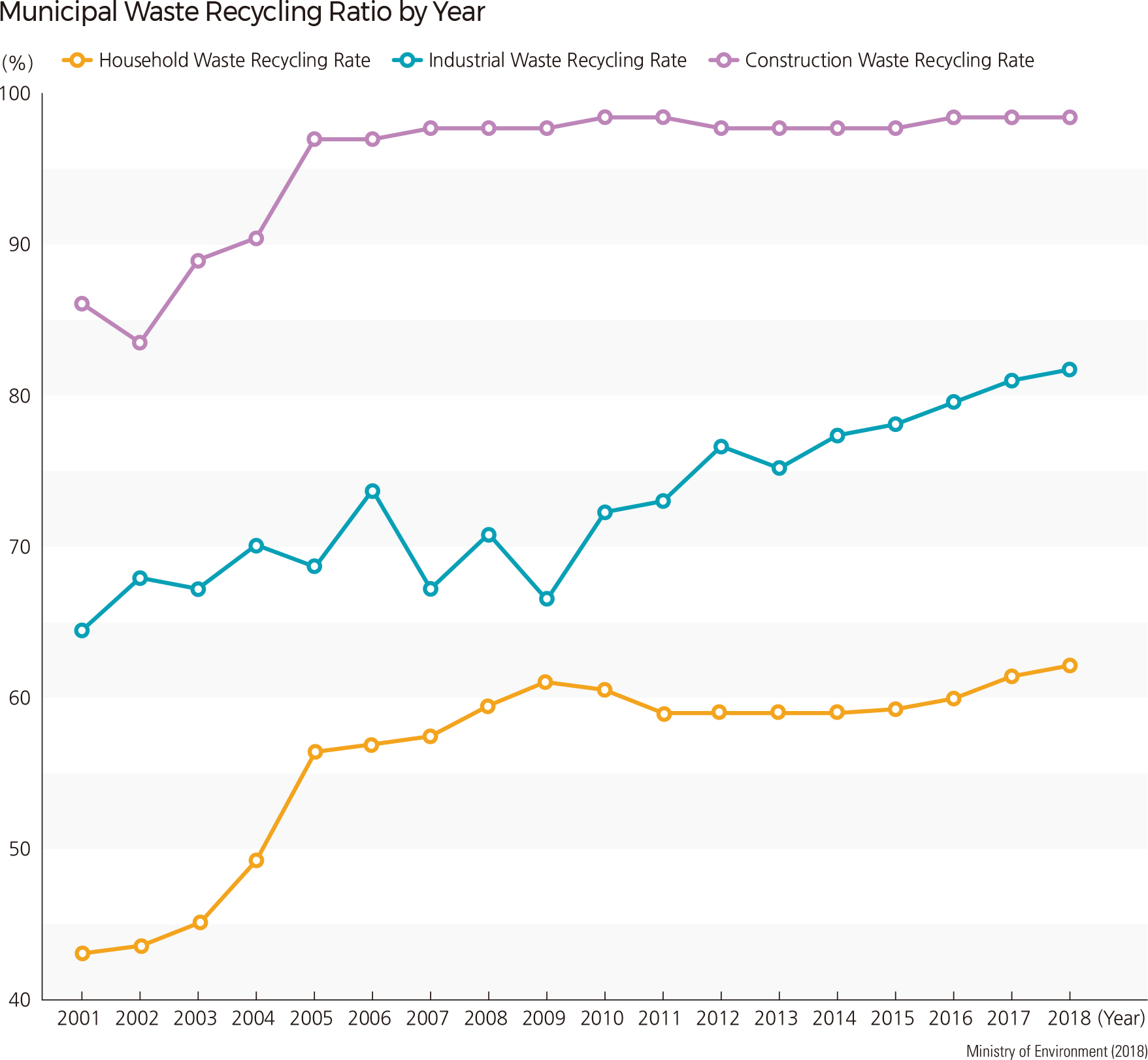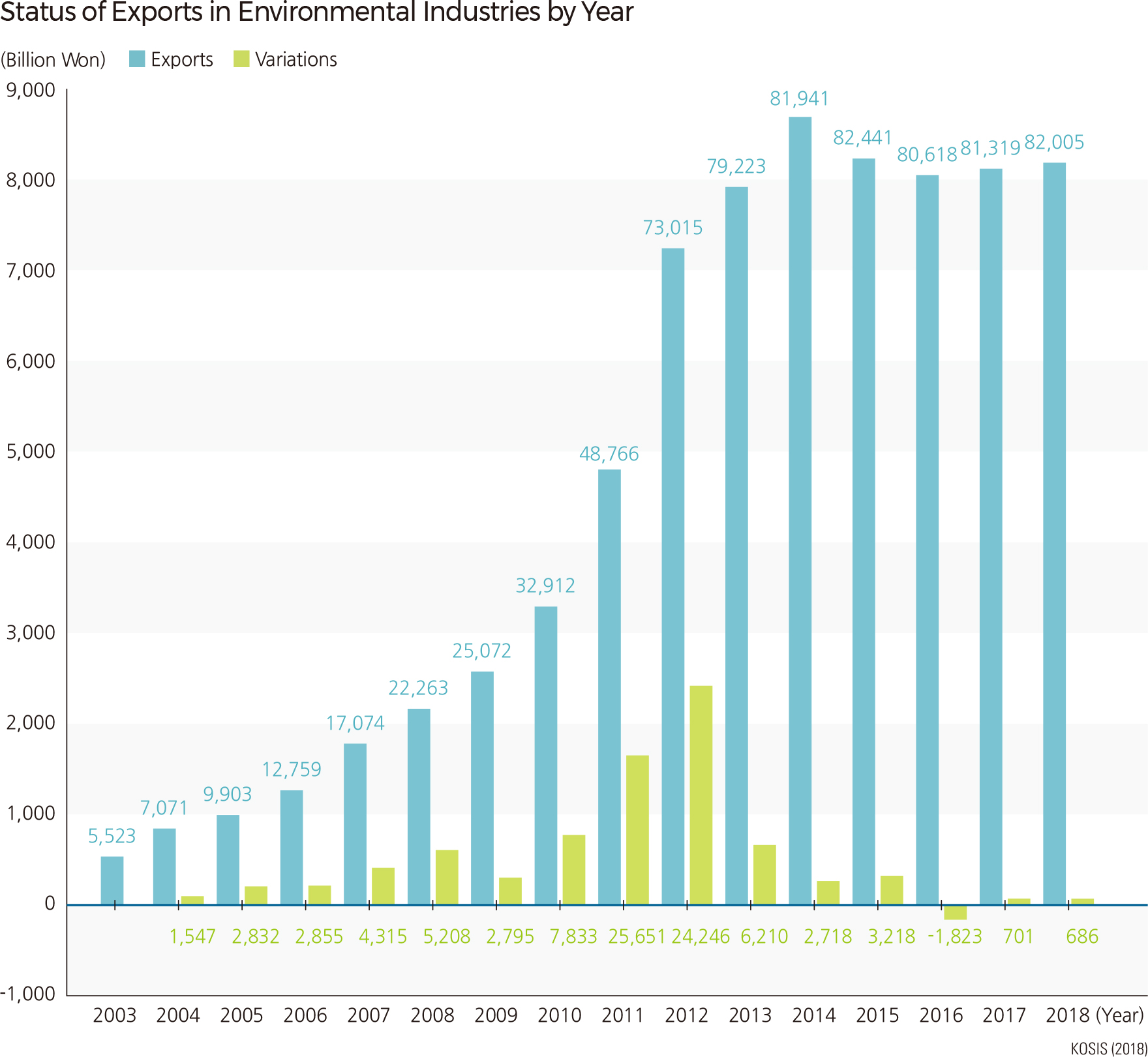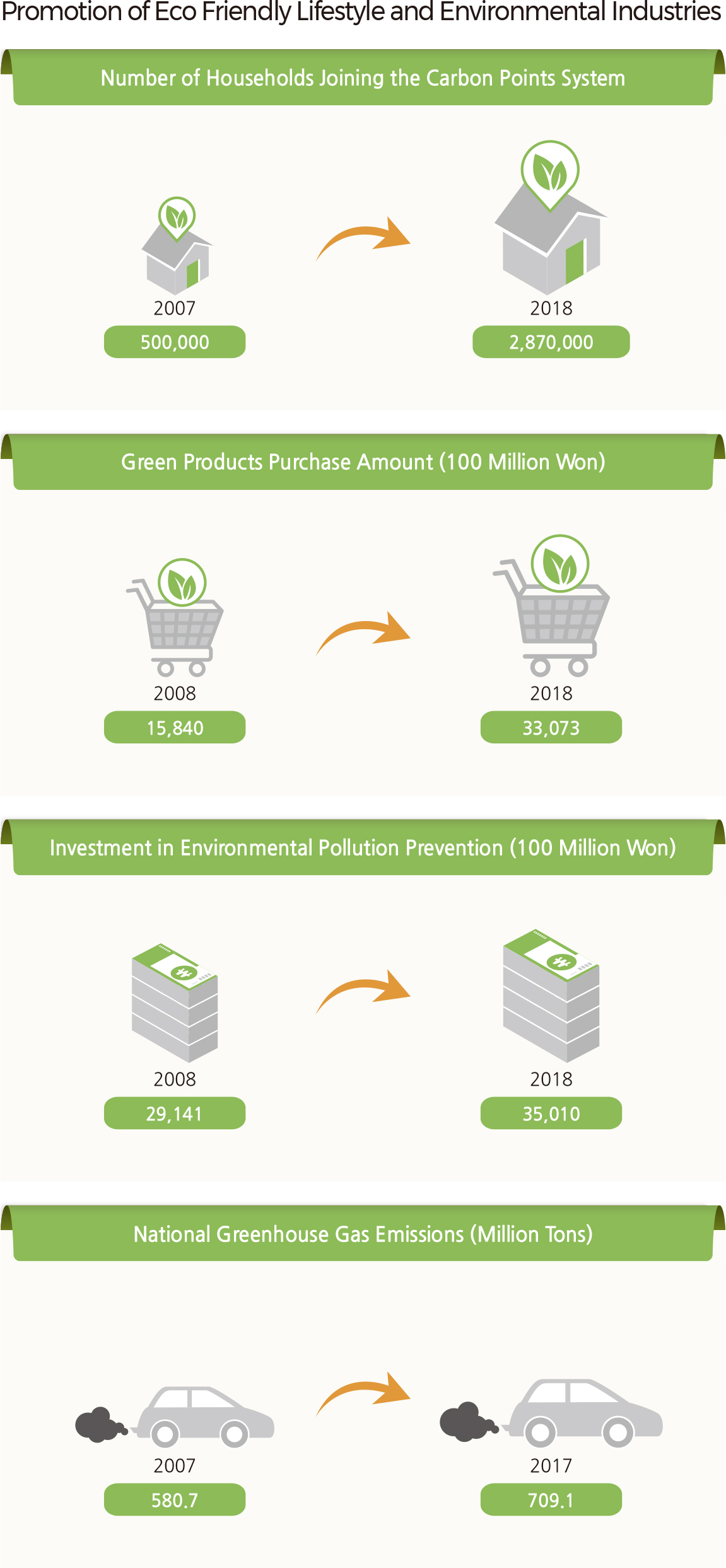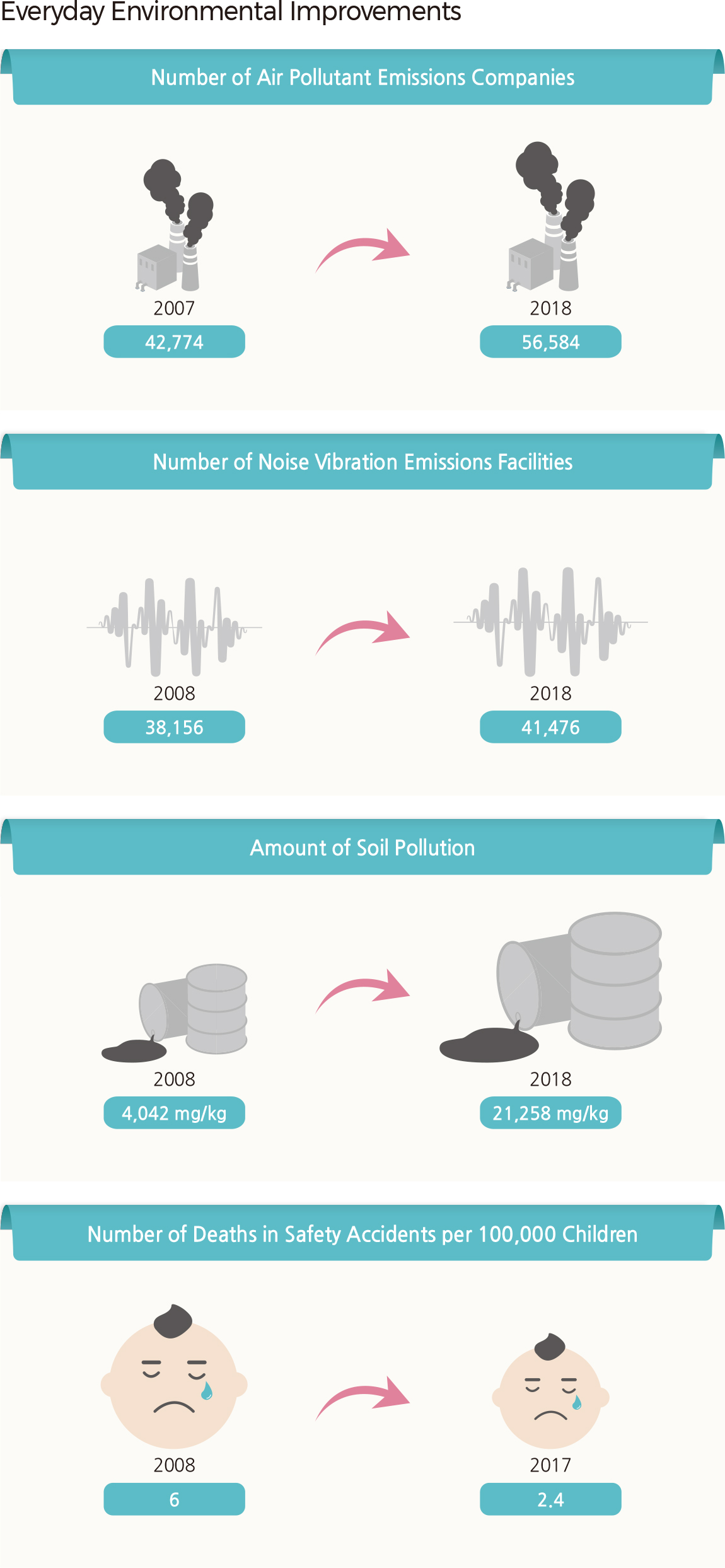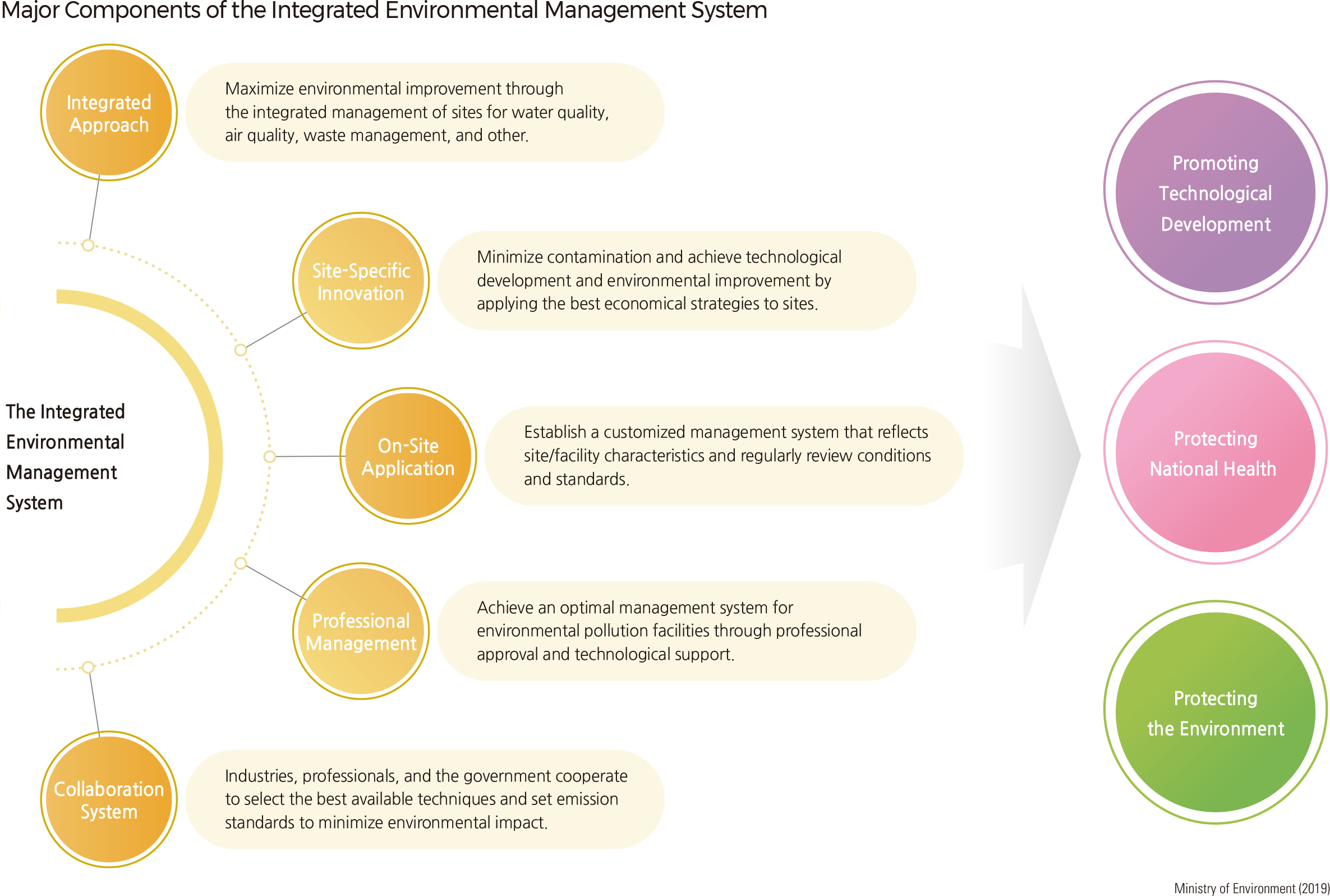English II 2020
Many environmental indicators in South Korea are steadily improving due to the efforts of the citizens and the government. The government strengthens the environmental management system to create an ecologically healthy and safe environment by preventing urban sprawl, inspecting hazardous chemical handling facilities, and managing environmental diseases. In 2014, while the government simplified the licensing processes, the Integrated Approach to Environmental Management was established to effectively suppress pollutant emissions. The project was increasing the rate of achieving "good water" based on water pollution indicators. Accordingly, the indicators were beneficial for improving the water quality of rivers and lakes nationwide. Also, water supply distribution systems have been enhanced, supplying clean water to farming and fishing villages. The supply rate of the sewer system is also increasing, while the concentration of water pollutants is continuously decreasing.
Global concerns regarding climate change have led to proactive efforts on the local level to reduce greenhouse gas (GHG) emissions. Maintaining pace with the international society, Korea aimed to reduce 30% of GHG emissions by 2020 while instituting a low-carbon socio-economic structure. The government also maximizes resource circulation by recycling wastes and cultivates the environmental industry as the nation's new growth engine. The export volume for Korea's environmental industry has increased from 0.7 trillion KRW in 2004 to 8.2 trillion KRW in 2018. It is expected to be of great help in creating new jobs and increasing revenue.
There are tangible outcomes from promoting the expansion of ecological space, advancement in biodiversity management, restoration of stream ecosystems, and reduction of ultra-particulate matter. For example, parks and protected areas are steadily expanding as more natural parks are designated and managed as places of relaxation and ecological exploration.
It is possible to know whether environmental indicators are improving by reviewing eco-friendly living, environmental industries, living environments, and national environmental values. The data on the number of households who have subscribed to the carbon points system, the purchase amount of green products, and the investment cost to prevent environmental pollution indicate that the scale of eco-friendly living and environmental industries is increasing. However, with urbanization, the number of businesses that discharge air pollutants, the number of facilities that discharge noise and vibration, and the level of soil pollution are constantly rising. Therefore, an active response is necessary to improve the living environment.
Lastly, the increasing number of ecological and landscape conservation areas, marine protected areas, native species, and endangered wildlife suggests that the nation’s views of the natural environment are gradually changing.
Over the past 40 years, South Korea has managed water pollutants, air pollutants, and wastes separately. Individual management did not reflect characteristics and conditions of each industrial sites, so the effect of improvement by sector did not lead to overall environmental improvement. The government has introduced the "Act on Integrated Management of Environmental Pollution Facilities," which assists big industries that cause a large environmental impact to manage pollutants in an integrated manner. With the implementation of the Act, the nation pursues comprehensive and effective environmental management, which mitigates the burden of obtaining multiple environmental licensing for industries. This leads to a parallel improvement of environmentally sound technology, restoration in environmental quality, and the cultivation of industries and their competitive edge. |
